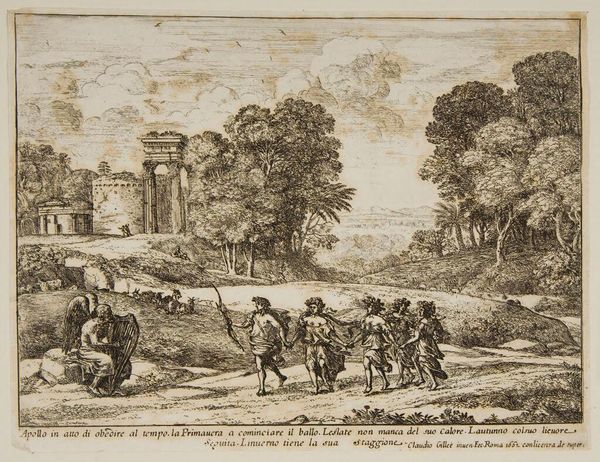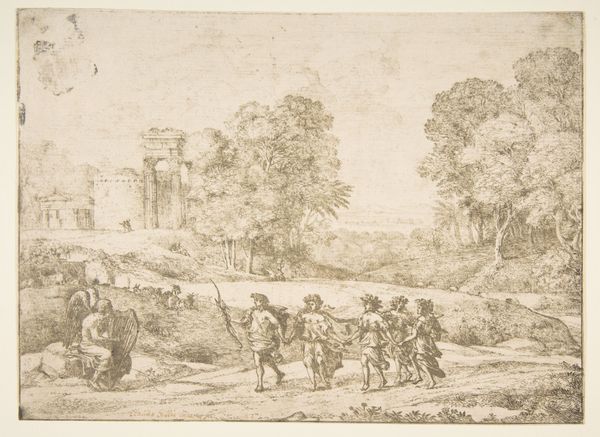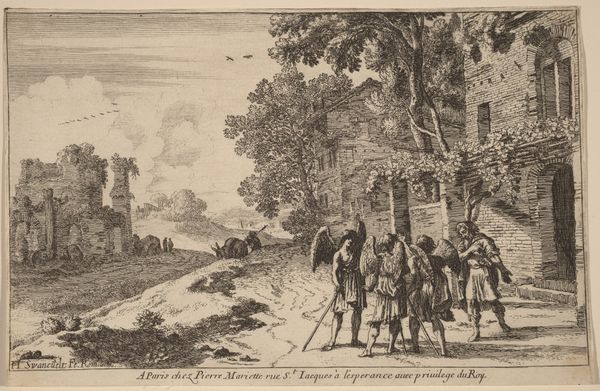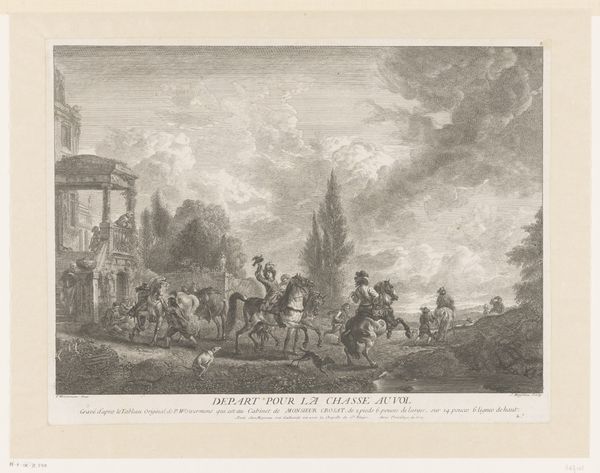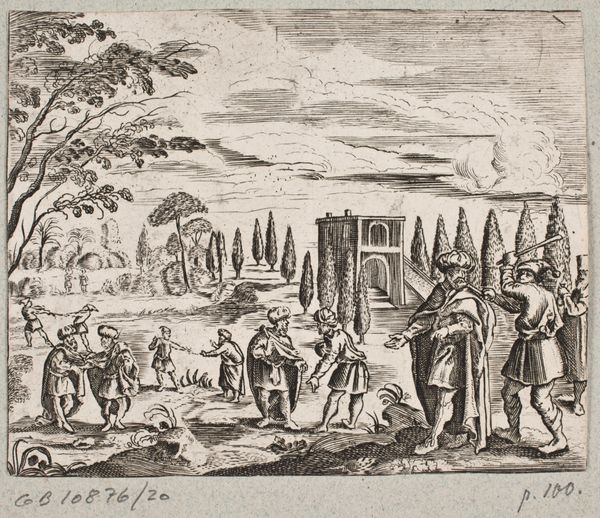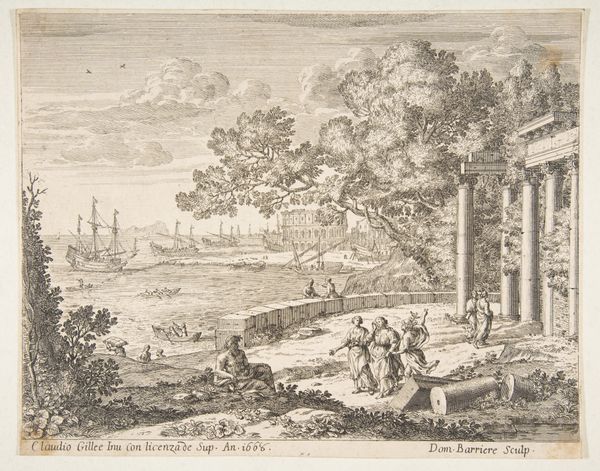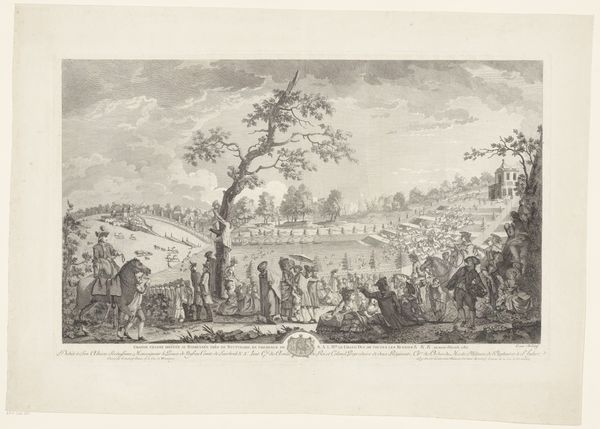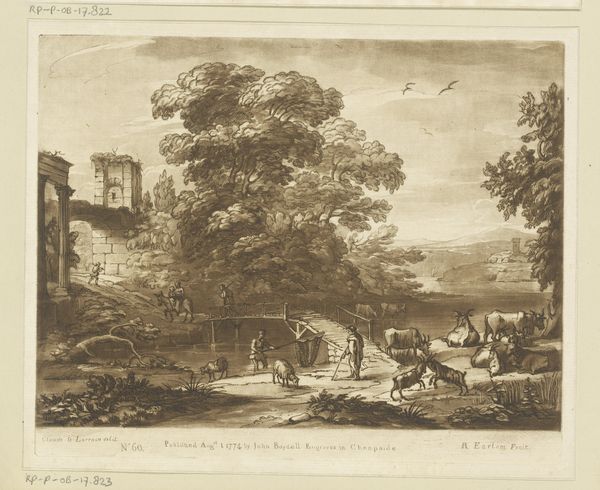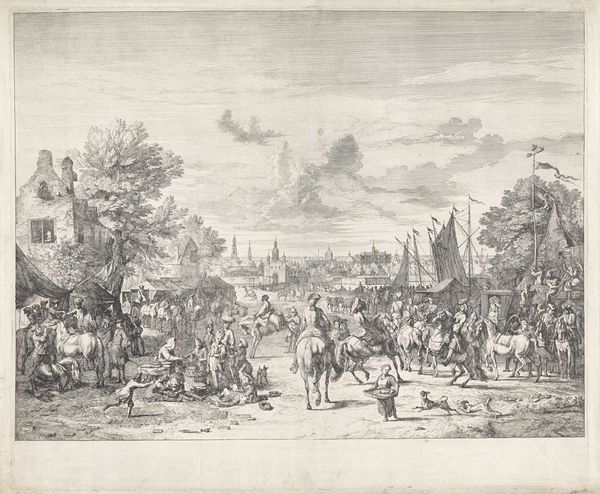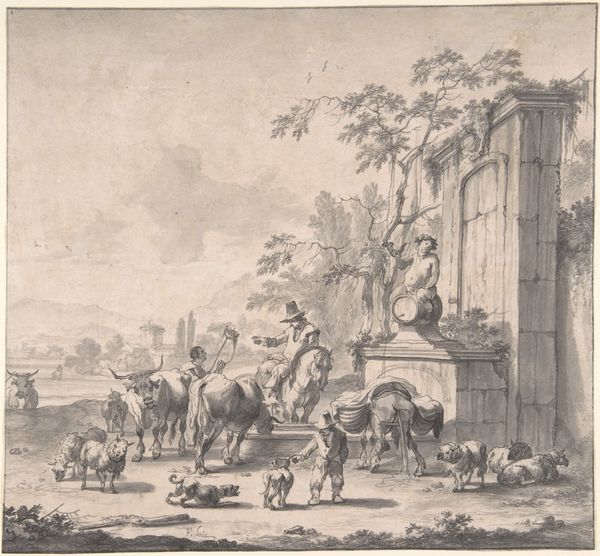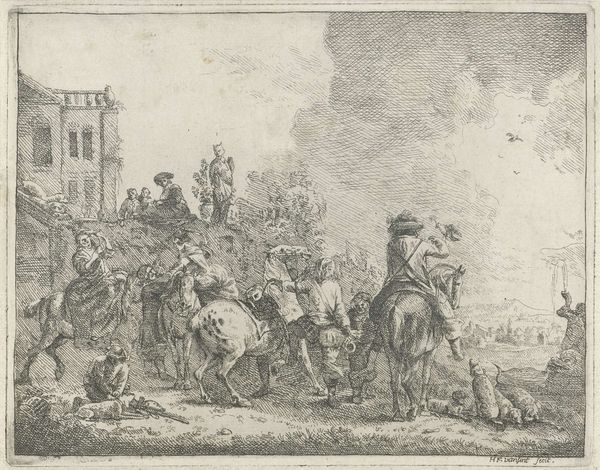
drawing, print, etching
#
drawing
#
allegory
#
baroque
# print
#
etching
#
landscape
#
history-painting
Dimensions: sheet: 7 7/8 x 10 1/4 in. (20 x 26 cm)
Copyright: Public Domain
Claude Lorrain made this etching, "Time, Apollo and the Seasons," in Rome in 1662, pressing ink onto paper through an intricately worked plate. The stark contrast of lines and shading influences the image's appearance, creating depth and texture. Notice how these lines form trees, clouds, and figures dancing in a circle. Etching is a printmaking technique that requires acid to cut into a metal surface. The artist applies a protective layer of wax, then scratches an image into it with a needle, exposing the metal. The plate is then immersed in acid, which bites into the exposed lines. The longer it sits, the deeper the lines become, which directly influences the darkness of the lines. This labor-intensive process allowed Lorrain to produce multiple copies of his composition to be distributed, making art accessible to a broader audience. Considering the materials and the making process reveals the cultural significance of this work, and helps us look beyond its aesthetic appeal.
Comments
No comments
Be the first to comment and join the conversation on the ultimate creative platform.
